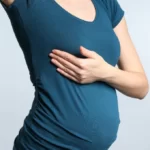
In the realm of human reproduction, the question “Can I Get Pregnant If He Pulled Out And Put It Back In?” often arises. It is crucial for individuals to understand the potential risks and possibilities associated with this scenario. In this comprehensive article, we will delve into the topic and explore the factors that contribute to the likelihood of pregnancy when a man withdraws before ejaculation and then re-enters the vagina.
If you are concerned about the possibility of getting pregnant in this situation, read on to gain valuable insights and accurate information. We will address frequently asked questions, provide expert advice, and equip you with the knowledge you need to make informed decisions regarding your sexual health.
Related: What are the Chances of Getting Pregnant after Stopping Birth Control?
Understanding the “Pull Out” Method
What is the “Pull Out” Method?
The “pull out” method, also known as withdrawal or coitus interruptus, is a form of contraception where the male partner withdraws his penis from the vagina before ejaculation. The aim is to prevent sperm from entering the vagina, thus reducing the chances of fertilization and pregnancy.
How Does the “Pull Out” Method Work?
The effectiveness of the “pull out” method relies on the ability to withdraw the penis before ejaculation, as pre-ejaculate fluid may contain some sperm. By removing the penis from the vagina in time, the method aims to minimize the chances of sperm reaching the egg.
Related: How Soon After Giving Birth Can You Get Pregnant?
Can I Get Pregnant If He Pulled Out And Put It Back In?

The act of withdrawing the penis from the vagina before ejaculation is not a foolproof contraceptive method. While it may reduce the chances of pregnancy compared to unprotected intercourse, it does not provide complete protection against unintended pregnancies.
Pre-ejaculate Fluid and Pregnancy
One of the primary concerns with the “pull out” method is the presence of pre-ejaculate fluid, which may contain a small number of sperm. While the chances of pregnancy from pre-ejaculate alone are relatively low, it is not a reliable method of contraception on its own.
The Chance of Sperm Residue
Even if the penis is withdrawn before ejaculation, some sperm may still be present on the tip of the penis or in the vaginal canal from previous sexual activity. This residual sperm can potentially lead to fertilization and pregnancy, even if the “pull out” method is practiced.
Fertility Timing and Ovulation
It’s important to note that the timing of sexual activity in relation to ovulation greatly affects the risk of pregnancy. Women are most fertile around the time of ovulation when an egg is released from the ovary. If intercourse occurs during this fertile window, the chances of pregnancy are significantly higher, regardless of the contraceptive method used.
Related: How Many Days After Sex Can You Take A Pregnancy Test?
Factors Influencing the Success of the “Pull Out” Method
Experience and Control
The effectiveness of the “pull out” method depends on the individual’s ability to accurately time withdrawal and control ejaculation. It requires practice, self-control, and trust between partners. Lack of experience or difficulty in controlling ejaculation may increase the risk of pregnancy.
Communication and Trust
Open communication between partners is crucial when relying on the “pull out” method. Both partners should discuss their comfort level, concerns, and readiness to engage in sexual activity without relying on additional contraceptive methods. Trust and understanding are essential to ensure a shared responsibility in preventing unintended pregnancies.
Contraceptive Backup
While some couples rely solely on the “pull out” method, it is advisable to consider using additional contraceptive backup methods to enhance effectiveness. Combining the “pull out” method with barrier methods, hormonal contraceptives, or long-acting reversible contraceptives (LARCs) can provide added protection against unintended pregnancy.
Related: Can You Get A Tattoo While Pregnant?
The Possibility of Pregnancy
When Things Go Wrong
Despite practicing the “pull out” method correctly, there is still a chance of unintended pregnancy. Factors such as miscalculation, poor timing, or the presence of sperm in the vaginal canal can contribute to this risk. It is essential to be aware of the potential for pregnancy even when practicing withdrawal.
Assessing the Risk
The risk of pregnancy with the “pull out” method is difficult to quantify precisely due to various factors involved. Studies suggest that, with perfect use, the method may have a failure rate of around 4% to 18%. However, with typical use, the failure rate increases to approximately 22% to 27%. Understanding these statistics and being aware of the potential risks can help individuals make informed decisions about their contraceptive choices.
The Importance of Personal Responsibility
It is crucial to understand that practicing the “pull out” method requires personal responsibility. Individuals engaging in sexual activity should be aware of the risks involved and take steps to ensure their own sexual health. Relying solely on the “pull out” method may not provide adequate protection against unintended pregnancy and sexually transmitted infections (STIs).
Related: BBT Chart Pregnant vs Not Pregnant?
Understanding the Menstrual Cycle
The Phases of the Menstrual Cycle
To better understand fertility and the risk of pregnancy, it is essential to familiarize oneself with the different phases of the menstrual cycle. These phases include menstruation, the follicular phase, ovulation, and the luteal phase. Each phase plays a crucial role in fertility and conception.
Ovulation and Fertility
Ovulation is the process where the ovary releases an egg, which is then available for fertilization. Understanding when ovulation occurs can help individuals make informed decisions about engaging in sexual activity and contraception.
Tracking Your Cycle
Tracking your menstrual cycle can provide valuable insights into your fertility patterns. Various methods, such as tracking basal body temperature, monitoring cervical mucus changes, or using ovulation prediction kits, can help identify the fertile window and reduce the risk of unintended pregnancy.
Effective Birth Control Options
Barrier Methods
Barrier methods, such as condoms and diaphragms, provide a physical barrier between sperm and the cervix, reducing the risk of pregnancy and STIs. These methods can be used alone or in combination with the “pull out” method for added protection.
Hormonal Methods
Hormonal methods, such as birth control pills, patches, or injections, work by altering hormonal levels to prevent ovulation, thicken cervical mucus, or thin the lining of the uterus. These methods are highly effective when used correctly and consistently.
Long-Acting Reversible Contraceptives (LARCs)
LARCs, such as intrauterine devices (IUDs) or contraceptive implants, provide long-term contraception without the need for daily or monthly maintenance. They are highly effective and suitable for individuals looking for a more convenient and reliable contraceptive option.
The Importance of Open Communication
Discussing Birth Control Methods
Open and honest communication between sexual partners is essential when it comes to making decisions about contraception. Discussing birth control methods, preferences, concerns, and responsibilities can lead to better understanding and shared responsibility.
Sharing Concerns and Fears
It’s important to create a safe space where both partners feel comfortable expressing their concerns and fears regarding pregnancy and contraception. Addressing these concerns together can strengthen the relationship and lead to informed decision-making.
Seeking Professional Advice
If there are doubts or questions about contraceptive options, it is advisable to seek professional advice from healthcare providers or sexual health clinics. They can provide personalized guidance, information, and support in choosing the most suitable contraceptive method based on individual needs and preferences.
The Emotional and Psychological Impact
Anxiety and Stress
The fear of unintended pregnancy and the reliance on the “pull out” method can contribute to anxiety and stress. It’s important to acknowledge and address these emotions, both individually and as a couple, to maintain a healthy sexual relationship.
Relationship Dynamics
The choice of contraception can impact relationship dynamics. It’s important to have open conversations about desires, intentions, and long-term plans regarding family planning. Understanding each other’s perspectives and goals can help create a strong foundation for making informed decisions about contraception.
Seeking Support
If the emotional and psychological impact of relying on the “pull out” method becomes overwhelming, seeking support from trusted friends, family, or professional counselors can be beneficial. Having someone to talk to can provide reassurance, guidance, and a space to process any concerns or anxieties.
The Reality of Unintended Pregnancy
The Statistics
Despite efforts to prevent unintended pregnancy, it can still occur. It is essential to understand that unintended pregnancy is a common occurrence, and individuals should be prepared for the possibility. Being informed about available options can help individuals make decisions that align with their personal circumstances.
Considering All Options
In the event of an unintended pregnancy, it’s important to consider all available options, including parenting, adoption, and abortion. Each option carries its own set of considerations, and individuals should seek appropriate guidance and support to make the best decision for themselves.
Available Support and Resources
Numerous organizations and resources are available to provide support and information to individuals facing unintended pregnancies. These resources can offer counseling, healthcare services, and assistance in navigating the various options and decision-making process.
Clearing Misconceptions
The Myth of Safe Withdrawal
It is crucial to debunk the misconception that the “pull out” method is a safe and effective form of contraception on its own. While it can reduce the risk of pregnancy when practiced correctly, it is not foolproof and should not be relied upon as the sole method of contraception.
Understanding Fertility and Conception
Educating oneself about fertility, ovulation, and the reproductive process can help individuals make informed decisions about contraception. Understanding the factors that contribute to pregnancy can assist in choosing the most effective methods to prevent unintended pregnancies.
The Need for Reliable Contraception
To ensure maximum protection against unintended pregnancy, it is essential to use reliable and effective forms of contraception. The “pull out” method should be combined with other contraceptive options for optimal results. Discussing and exploring available methods with healthcare professionals can help individuals make the best choices for their specific needs.
Responsible Choices for Sexual Health
Shared Responsibility
Taking responsibility for sexual health involves both partners actively participating in the decision-making process. Shared responsibility includes open communication, using reliable contraceptive methods, and being aware of the potential risks and consequences.
Education and Awareness
Staying informed about sexual health, contraception, and reproductive processes is crucial. Continuously educating oneself and staying updated on advancements in contraceptive methods can contribute to making responsible choices for sexual health.
Regular Check-ups
Regular check-ups with healthcare providers are important for individuals engaging in sexual activity. These visits provide an opportunity to discuss concerns, review contraceptive options, and ensure overall reproductive health.
Conclusion
In conclusion, the question “Can I Get Pregnant If He Pulled Out And Put It Back In?” highlights the uncertainties and potential risks associated with the withdrawal method as a form of contraception. While withdrawing before ejaculation and re-entering the vagina may reduce the chances of pregnancy compared to unprotected intercourse, it is not a reliable method on its own. Factors such as pre-ejaculate fluid, timing of intercourse, sperm viability, and human error contribute to the risk of pregnancy.
To minimize the chances of unintended pregnancy, it is advisable to use additional contraceptive methods, such as barrier methods or hormonal contraceptives. Open and honest communication between partners, along with a thorough understanding of each other’s sexual health and contraceptive preferences, is crucial.
If you are concerned about the possibility of pregnancy or need further guidance on contraception, it is always recommended to consult with a healthcare professional. They can provide personalized advice based on your specific circumstances and help you make informed decisions regarding your sexual and reproductive health.
Remember, contraception is a shared responsibility, and prioritizing your sexual health is essential for a happy and healthy life.
Frequently Asked Questions (FAQs)
Can I get pregnant if my partner pulls out and puts it back in multiple times during one sexual encounter?
Yes, there is still a risk of pregnancy if your partner withdraws and re-enters multiple times. Each re-entry carries the potential for sperm to be introduced into the vagina, increasing the likelihood of pregnancy.
Should I rely on the withdrawal method alone for contraception?
It is not recommended to rely solely on the withdrawal method for contraception, as it is not highly effective and does not provide protection against STIs. Consider using additional contraceptive methods, such as barrier methods or hormonal contraceptives, to increase effectiveness.
Can I get pregnant if my partner urinates before re-entering?
Urination after ejaculation can help flush out any remaining sperm in the urethra, reducing the chances of pregnancy. However, it does not eliminate the risk entirely, as pre-ejaculate can still contain viable sperm.
What should I do if I’m concerned about pregnancy after using the withdrawal method?
If you are worried about pregnancy, consider emergency contraception, such as the morning-after pill, which can be taken within a specified time frame after unprotected intercourse. It’s also advisable to consult a healthcare professional for personalized advice.
Can the withdrawal method be effective if practiced correctly?
While the withdrawal method can be more effective if practiced correctly, it is still less reliable than other contraceptive methods. There is always a risk of human error, and sperm in pre-ejaculate can lead to pregnancy.
How can I determine my fertile window to avoid pregnancy?
Tracking your menstrual cycle and using methods such as basal body temperature charting, cervical mucus monitoring, or ovulation predictor kits can help you determine your fertile window. It’s important to note that these methods are not foolproof and may require consistency and practice to accurately identify your most fertile days.












